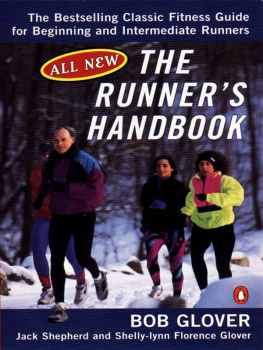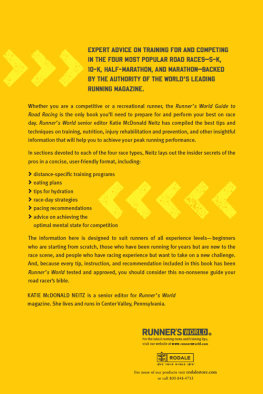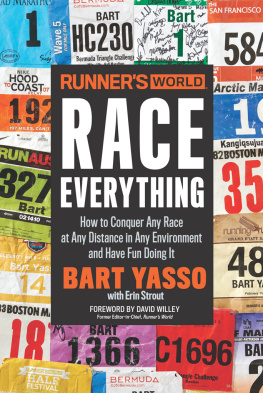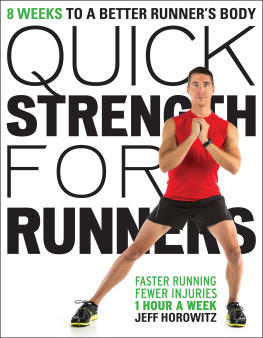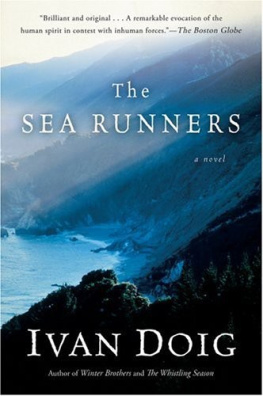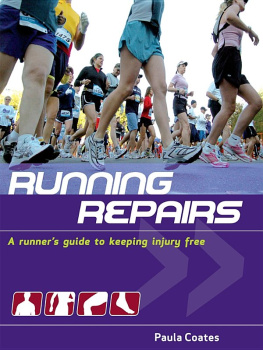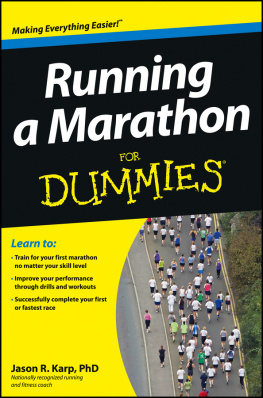


For Beatrice

Contents
Acknowledgments
After writing my first book, The Runners Rule Book, I joked that the experience was like running a marathon: There was the looming, daunting goal; the weeks and months of plodding work; and finally an agonizing sprint to the finish. At which point I was exhausted... and ready to do it again.
And so I did.
Writing The Runners Field Manual proved to be another marathon, for sure. Many people helped me reach this particular finish line. Id like to thank some of them here.
Thanks to the fans and spectatorseveryone who read the Rule Book and told me that they enjoyed it, as well as the readers of my RunnersWorld.com blog, RW Daily. Your encouragement was, and is, a tremendous help.
Thanks to the organizersRunners World Editor-in-Chief David Willey, who did so much to help make the Field Manual a reality; John Atwood, my editor for the book, whose suggestions (big and small) brought each chapter into sharper focus; Christina Gaugler, whose design direction breathed life into each page; and the entire Rodale Books team.
Thanks to my training partners, the staff here at Runners Worldworking with you has made me a better writer and editor than I could ever be on my own.
Last but not least: Thanks to my wife, Sarah, who indulged my many Saturdays holed up at the library and endured my occasional anxiety and crabbiness with patience and grace.
Im spent. Lets do it again!
The Runners Oath
On my honor I will do my best
To be a better runner;
To watch for cars, and increase my mileage gradually;
To run in the rain, without boast or complaint;
To not go out way too fast;
To eat right, listen to my body, and,
one of these days, volunteer at a race.

Introduction
Hello! Welcome to The Runners Field Manual.
Look carefully at the group of people to the left. Can you spot the runner? If you answered, None of these people are runners, you are correct. The runner is out doing a long run because she has a half-marathon next month and doesnt have time to just stand around posing with a group of strangers.
The point is that running requires dedication, if you want to do it right. It also requires a certain base of practical, real-world knowledgeof how-to information that will keep you happy and healthy.
For instance...
How do you know what shoes to buy? (See page .)
And for the love of Bowerman, how can you keep your shoelaces from coming untied, once and for all? (Page .)
My goal with The Runners Field Manual is to address all of these questions and many moreincluding, I hope, a few questions you never knew you had. And to make you smile a few times along the way.
Put another way: Whereas my previous book, The Runners Rule Book, told you things, The Runners Field Manual will show you. At least thats my aim.
The information and advice that follows is intended not just for newbies, but for anyone who wants to learn a little more about the craft of running and the art of being a runner. Think of it as the set of instructions you wish youd gotten with your very first pair of running shoes.
Enjoy.
Mark Remy
Chapter 1
The Basics
Anybody can run. To see this principle in action, head to your local mall, purchase a dozen brown mice at the pet store, then release them in the food court. See? Running is easy.
Becoming a runner, on the other hand... well, thats not so simple. Becoming a runner takes discipline, a little know-how, and a lot of patience.
The Runners Field Manual cant help you with the discipline or patience. But we can help you with the know-how. Well start in this chapter by addressing a few of the fundamentals, beginning with some basic questions.
Who Is a Runner?
A runner, broadly speaking, is anyone who runs. Simple as that. Dont let anyone tell you anything different.

What Is Running?
This is a basic question, with a basic answer.
Running is defined as moving at any pace faster than a walk. More technically: If both feet are off the ground at any given moment while youre moving, then you are running. Conversely, if you have at least one foot on the ground at all times, then by definition, you are walking.
It should be noted that this seemingly straightforward issue has become fraught with tension and even, occasionally, anger. Some back-of-the-packers, particularly those who employ a run/walk strategy while training or racing, sense a value judgment here and bristle at the suggestion that they arent real runners. Thats unfortunate, and such anger is misguided, for several reasons.
First, there is no shame in walking, and to imply otherwise is itself insulting to anyone who walks for fun and fitness. Second, this is a question of mechanics... not of speed or dedication or anything else. (Elite racewalkers can walkyes, walkat a 6-minute-per-mile pace.) Certainly its not a question of anyones character. Third, and finally, isnt it a little silly to fret over semantics and labels? Why not use that energy instead to just get out there and get moving?
Someday Merriam-Webster may change its definitions of running and walking. Until it does, The Runners Field Manual will stick with the ones we have, and move onat whatever pace we can manage.
Where Should You Run?
You should run wherever youre able to run, and wherever you enjoy runningassuming its legal and reasonably safe, for you and those around you.
Most runners use public streets and roads. Since this chapter is titled The Basics, well go ahead and say it: Running on highways and freeways usually isnt legal and never is safe. If you find yourself stopped at a toll plaza during a run, you have definitely strayed into inappropriate territory.
Many runners enjoy running on trails, away from traffic and the hustle and bustle of modern life. The word trail can mean an .
F.Y.I.
Go Against the Flow
Heres another bit of basic knowledge: Pedestrians, including runners, should walk or run against trafficnot with it. Not only is this the law in most places, its just good common sense: Its much easier to see and respond to traffic when youre facing it than when its constantly zooming up behind you.
Typically paved routes through parks or along bodies of water, paths are a nice option. Just be aware that most such paths are designed for mixed useso keep an eye out for walkers, in-line skaters, and cyclists, as well as other runners. []
Next page


